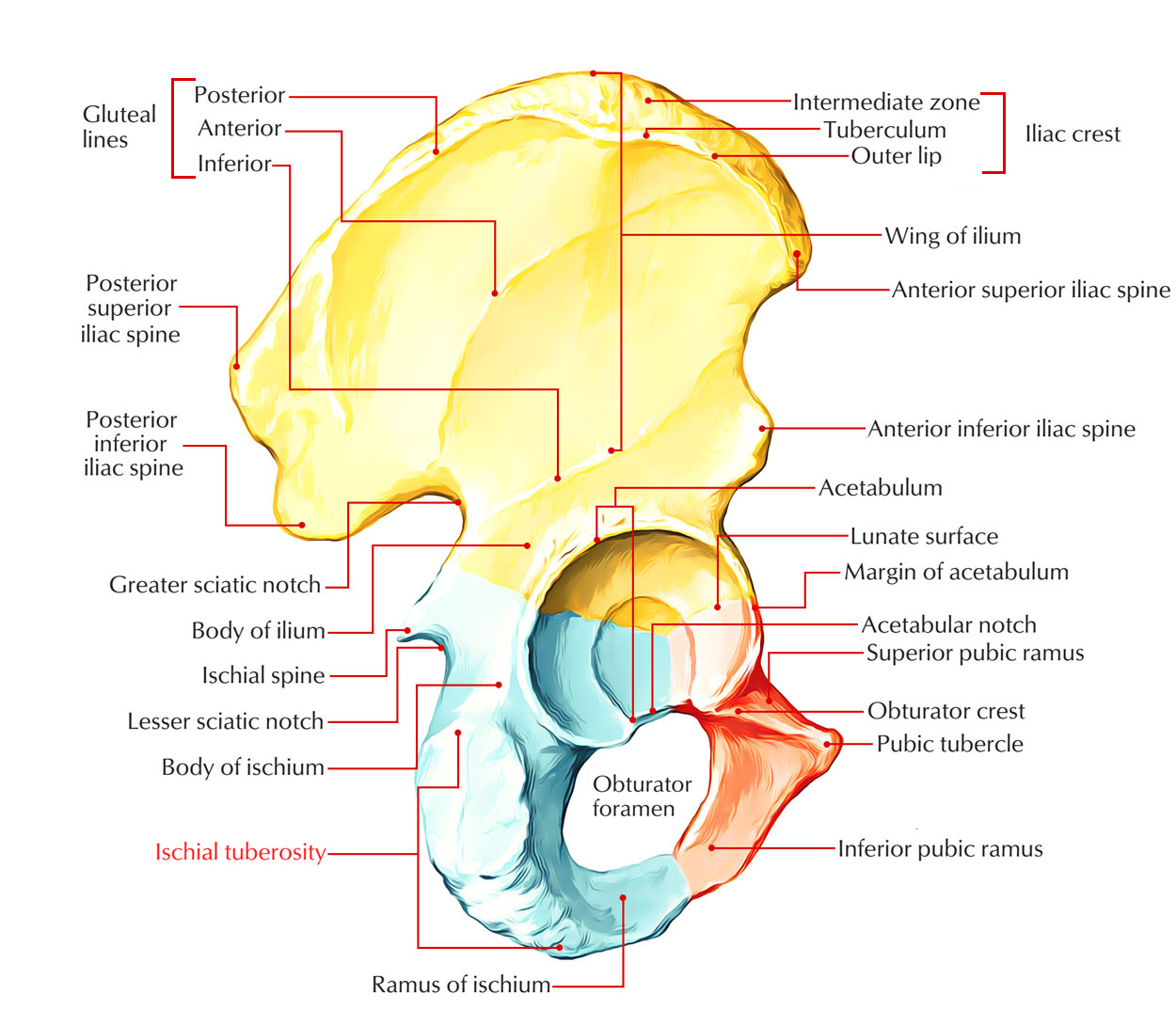A large protuberance known as the ischial tuberosity is the most protuberant element of the ischium on the posteroinferior aspect of the bone. This tuberosity is an important site for the attachment of lower limb muscles and also for reinforcing the body while sitting. The ischial tuberosity is located posteroinferior towards the acetabulum. It is related primarily with the hamstring muscles of the posterior thigh. A transverse line divides it into upper and lower zones.

Ischial Tuberosity
Structure
The upper area of the ischial tuberosity is positioned vertically and further subdivided by an oblique line within two parts, which travels from medial to lateral and downwards over the surface:
- The more medial part of the upper area attaches to the mutual origination of the semitendinosus muscle along with the long head of the biceps femoris muscle.
- The lateral portion attaches to the semimembranosus muscle.
The lower area of the ischial tuberosity is oriented horizontally and is divided into medial as well as lateral zones by a ridge of bone:
- The lateral zone gives connects to the part of the adductor magnus muscle.
- The medial part is enveloped by connective tissue along with a bursa and points inferiorly.
On each side, the inferior margin of the pelvic bone protrudes posteriorly as well as laterally from the pubic symphysis in order to terminate inside a prominent tuberosity that is Ischial Tuberosity. Together, the pubic arch is made by these elements, which creates the margin of the anterior half of the pelvic outlet.
Attachments
The location of the tuberosity enables it to bear the weight of the body while sitting. It is a potential site of attachment for several muscles and ligaments such as:
- Adductor magnus: Located on the medial side of the thigh, it is a large triangular muscle that adducts the leg at the hip. Also helps the lateral and internal rotation of the upper leg.
- Sacrotuberous ligament: Located at the inferior as well as posterior part of the pelvis. In order to prevent tilting, it attaches the sacrum to the hip bones.
- Semimembranos muscle: It extends the hip joint and also bends the knee joint.
- Biceps femoris: It extends the lower limb while propelling, rearing or kicking.
- Semitendinosus: It extends the hip joint and also bends the knee joint.

 (52 votes, average: 4.72 out of 5)
(52 votes, average: 4.72 out of 5)